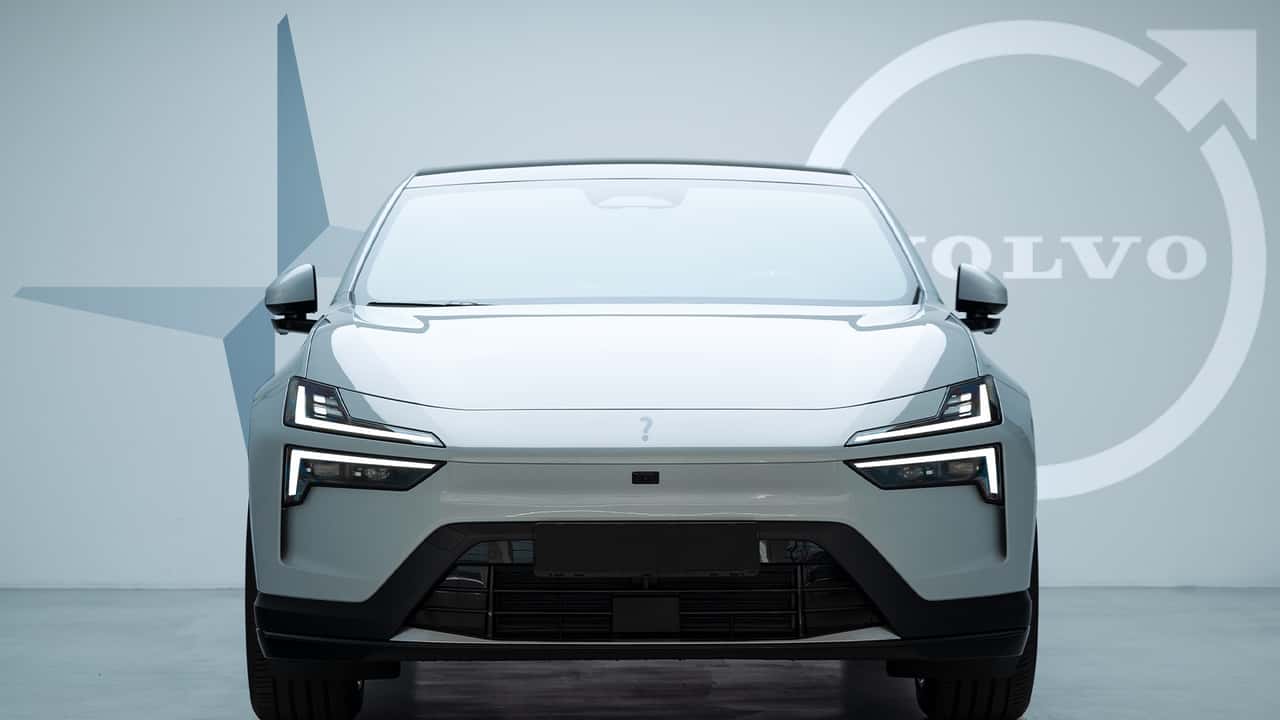- Polestar’s CEO, the former head of design at Volvo, is out.
- He brought Volvo’s concepts with him to Polestar when the brand was launched.
- Now, Volvo is behind the curve and Polestar is spinning its wheels.
If you drive a Polestar, you’ve likely had a tough time explaining to people what it is, exactly. Oftentimes, that conversation turns to them asking “So it’s like a Volvo, right?” and then you saying “Um, yeah, kind of,” just so that all involved can continue on with their day. This lack of differentiation between Volvo and its supposed performance-focused electric vehicle spinoff—all while Volvo itself builds up its electric lineup—has been a persistent problem that even the company’s executives, engineers and designers haven’t been able to figure out.
Granted, Polestar has other problems. Sales are down, it rested too long on its sole sedan model in an SUV world, the stock price after going public has been a disaster, and its dependency on China is now a liability rather than an asset. (Both Polestar and Volvo are owned by China’s Geely Group.)
Figuring that out is now Michael Lohscheller’s problem. This veteran of big automakers like Daimler, Mitsubishi, Volkswagen, and Opel (and some, uh, smaller automakers like Nikola Motors and VinFast) takes the CEO role from founding top executive Thomas Ingenlath. Lohscheller is now tasked with doing what Ingenlath couldn’t: making Polestar thrive on its own efforts. But the “Volvo problem” is now kind of a headache for both brands.
Unlike the Polestar of yesteryear that cranked out hot wagons and hatchbacks, it’s no longer a performance sub-brand of Volvo. Instead, Geely spun Polestar off into its own separate EV brand back in 2017—just two years after Volvo officially acquired the racing team and tuning company. Did this do a disservice to both Volvo and its former decorated performance arm?

Explaining this requires a bit of a history lesson. Back in 2013, Volvo had its eyes on creating an all-new halo coupe: the C90.
This product would be one of three coupe concepts Volvo, including the Concept Coupe (C90), shooting brake (Concept Estate), and a crossover (Concept XC Coupe). This design era, which holds up remarkably well even today, was a product of Ingenlath; at the time, he served as Volvo’s Senior Vice President of Design.
Volvo was expected to release the coupe by 2020. “First we’ll roll out the 90 cluster, then we’ll roll out the 60 cluster,” Ingenlath told the UK’S Auto Express in late 2015. “Then even that new [all-electric] product, and as everyone knows by now, an XC40 as well. All this we want to manage within a four-year period.”
Only some of that would come to pass, because Polestar was then spun off into its own brand. And the C90 that could have been was instead released as the $156,000 hybrid Polestar 1.

Polestar 1 (Left) vs Volvo Concept Coupe (Right)
This would not be the end of Volvo’s designs being funneled pretty much wholesale into this new brand.
After all, coupes are niche. They don’t exactly sell as well as something with four doors, hence the higher price tag and focus on being sportier. Plus, let’s face it: newcomer Polestar needed a flashy entry to market and Volvo’s Concept Coupe was extremely well-received by the public.
It’s fine, though, because if there’s one thing that Volvo really knows—other than wagons—it’s sedans.
So Ingenlath got back behind the drawing board, and in 2016, Volvo showed off his latest work: Concept 40.2. Its name came from the discontinued Volvo S40, which met the chopping block in 2012 after it failed to attract U.S. buyers. But the Concept 40.2 would change that. Its styling was modern, body, angular—all of the things that really redefined what Scandinavian design looked like.
And if you forgot the Concept 40.2, it should look very familiar today:

Polestar 2 (Left) vs Volvo Concept 40.2 (Right)
Except there was a problem. Geely acquired Volvo from a Great Recession-battered Ford in 2010 and it immediately had global expansion plans in mind. At the time, this felt ridiculous from a Chinese automaker in ways that are no laughing matter today. But clearly, Geely wanted more out of the deal—more ways into the EV and hybrid market it saw as the future. (It also wanted to leverage Chinese production at a time before tariffs put a damper on such a strategy.)
To do that, Polestar needed more than just a low-volume hybrid coupe; it needed something that could compete with the likes of the Tesla Model 3. So the Volvo Concept 40.2 went to Polestar, giving birth to the Polestar 2 that debuted in 2019.
Around the time Ingenlath was designing the 40.2, he also designed a small SUV called the Volvo Concept 40.1, which was revealed alongside the sedan. The 40.1 would be retained by Volvo and eventually become the Volvo XC40, available in electric and hybrid form. Several years later, Volvo debuted its Recharge concept, which previewed the dedicated platform of both the Polestar 3 and Volvo EX90.
You can probably see where this is all going: in cannibalizing Volvo early on, Polestar not only couldn’t stand on its own but also didn’t do the Swedish company it “spun off” from any favors.

Polestar 3 (Left) vs Volvo Recharge Concept (Right)
When Volvo made the same commitment in 2021 to become a fully electric brand by the close of the decade, it now needed fresh concepts that didn’t look like a carbon copy of Polestar’s vehicles that had already hit the road. The automaker still doesn’t have any battery-electric sedans on the road today and is just now getting its footing with electrified SUVs.
This has been a big problem as of late. While Volvo has always done well with its hybrids and PHEVs, the XC40 and C40 Recharge—cars we like here at InsideEVs, by the way—are outclassed by more modern purpose-built EVs. The EX90 has been delayed by software problems. The China-built EX30 is doing great internationally but just got kneecapped in the U.S. by tariffs. Dealers over here haven’t been happy, and Volvo is getting into the EV game just in time for uneven demand and a tough sales environment.
So why did Geely even break out the brands? In theory, Polestar can take risks that Volvo cannot. It’s an experimental brand that can make radical changes to styling, material, and features. And Geely from the beginning wanted to circumvent the dealer system in America with an online-ordering subscription model, which ended up half-working. If those risks are successful, there’s nothing wrong with rolling them into the more mature Volvo brand.
Plus, Geely is no stranger to sharing platforms, tech, and feel between multiple brands. In addition to Volvo and Polestar, the automaker also has its claws in similar EV brands under its umbrella like Lynk & Co and Zeekr. Volvo has even used these partnerships to help build out its EVs like the EX30.
It’s proven to be a double-edged sword as massive protectionism tariffs have resulted in both Polestar and Volvo rethinking their made-in-China efforts, weakening sales across both brands as they work to quickly plan around global efforts to block brands that benefit from “unfair subsidization.”
You also can’t blame Volvo for having to carry a sagging Polestar, including financially. It divorced itself from that investment earlier this year. Volvo called the move a “decisive transformation phase,” even though it will continue collaborating with Polestar on R&D and manufacturing. However, Volvo’s got bills to pay, and it intends to use its money for that purpose instead. Geely’s seemingly done better since then with Zeekr, as well as Lotus, which it’s pumping new life into.
But all of this puts Polestar in an awkward place, though, with new models not rolling out quickly enough to gain attention from new EV buyers. Its grasp at market share has been slow at best.
Meanwhile, Polestar still suffers from a smattering of actual car production locations: China for the Polestar 2, the U.S. for the Polestar 3 (at a Volvo plant) and South Korea for the Polestar 4. Maybe it has the tools to stand on its own two feet, but we haven’t seen them yet.
In retrospect, Geely probably wishes it had launched Polestar as a standalone brand rather than piggybacking off Volvo so much; not unlike Zeekr, in fact. The future at Polestar seems a bit murky right now, but one thing is clear: the brand is trying to pull itself out of the mud with a new direction and CEO.
Hopefully, Polestar doesn’t lose that spark that makes it such a special brand—but first, it actually needs to figure out what that is.
Contact the author: rob.stumpf@insideevs.com
In the automotive industry, there is constant evolution and innovation as manufacturers strive to create cutting-edge vehicles that meet the demands of consumers while also aligning with sustainability goals. Two notable brands in this realm, Polestar and Volvo, have gained recognition for their efforts in producing electric and hybrid vehicles. However, despite their commendable initiatives, there are aspects in which they have failed to meet expectations.
One significant error that both Polestar and Volvo have made is the lack of clear differentiation between their respective brands. Polestar, originally a performance division of Volvo, has now become a standalone brand focusing on electric vehicles. While this pivot was intended to establish Polestar as a distinct entity, the branding and design of their vehicles remain closely tied to Volvo. This lack of a clear identity has led to confusion among consumers and weakened the positioning of both brands in the market.
Furthermore, both Polestar and Volvo have fallen short in terms of range and performance compared to competitors in the electric vehicle segment. While their vehicles offer impressive efficiency and sustainability features, they have been criticized for not matching the range and acceleration capabilities of other electric vehicles on the market. This shortfall has hindered their ability to attract consumers who prioritize performance and driving range in their purchasing decisions.
Additionally, the pricing strategy of Polestar and Volvo has also been a point of contention for consumers. Despite positioning themselves as luxury electric vehicle brands, the pricing of their vehicles is often perceived as too high for the features and performance provided. This disconnect between price and value has deterred potential buyers and limited the market share of both brands.
In conclusion, while Polestar and Volvo have made significant strides in the electric vehicle market, there are clear areas in which they have failed to meet expectations. From a lack of brand differentiation to shortcomings in range and performance, there are crucial aspects that need to be addressed in order for these brands to regain their competitive edge in the industry. By acknowledging and addressing these shortcomings, Polestar and Volvo can position themselves as leaders in the electric vehicle market and drive towards a more sustainable automotive future.

